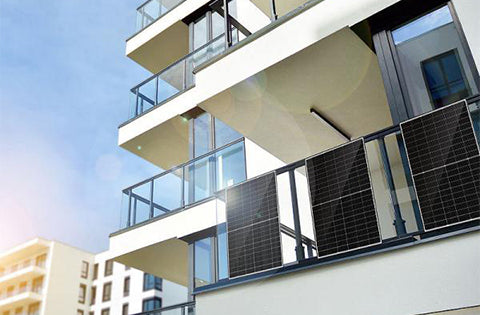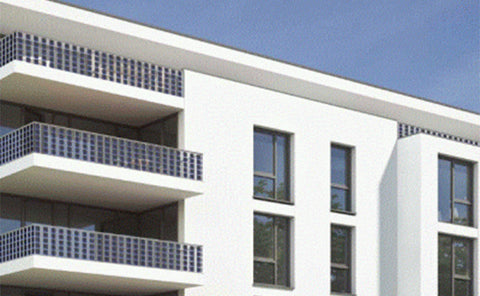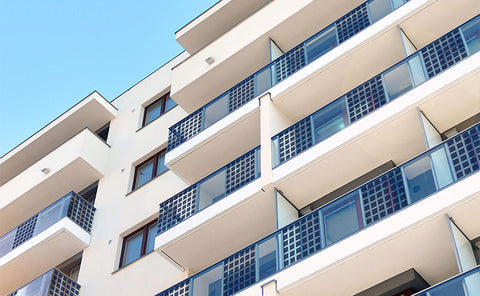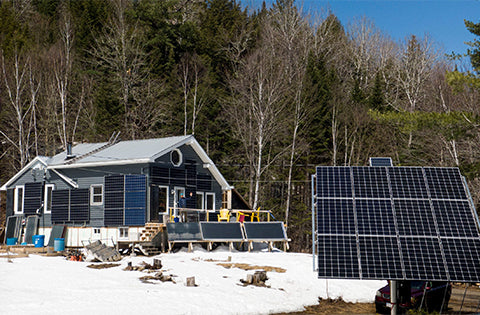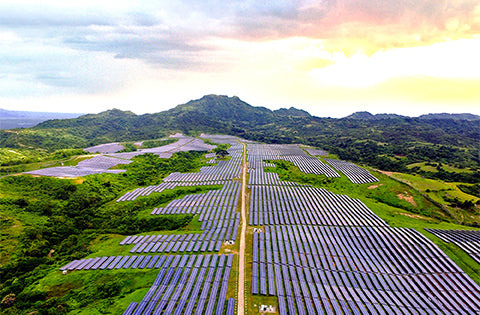At the beginning, you may confused about the question when you first heard about balcony power plant: how should that work with a balcony plant, the construction and the registration process? In this article about saving energy with a balcony power station, we have already given you many practical tips.
Why a balcony power plant instead of a real PV system?
A photovoltaic installation is in any case out of the question for tenants. After all, it is permanently installed and costs a small fortune. But for some extent, the advantages of a balcony power station outweigh a complete photovoltaic system: low cost and fast payback time; fast implementation and no professional invoice; easy registration and suitable for mobile people.
This is how much electricity a balcony power station generates?
The short answer is: no more than 600 watts. This is the legal upper limit that the inverter is allowed to store. If there are more, a specialist has to take over the installation and the registration becomes more complicated. How much electricity a balcony power plant generates depends on many factors. Of the solar panels, the location of the balcony, the alignment and of course the weather.
A balcony power plant is financially worthwhile after four to five years, even if the prognosis is somewhat optimistic due to the summer months and will certainly be corrected in the winter months towards a saving of 200 euros. But it doesn’t just make electricity and thus save money, it also does other things.
A balcony central gives you a good feeling
Of course you can only cover a part of your electricity consumption with it, but that also helps protect the climate. Every kilowatt hour that you generate with your balcony power plant is sustainable and is not generated by burning coal or gas or by nuclear energy. And saving a few hundred kilos of CO₂ per year is quite something.
A balcony plant makes you aware
The following is the description of an owner of balcony power plant: By that I mean mindfulness in terms of power consumption. Since I’ve been working on the subject, I pay more attention to switching off unnecessary power consumers or switching on the dishwasher and washing machine when the sun is shining. I now also charge the hybrid as much as possible when the solar panel is doing its job. Then I know for sure that all generated electricity is actually used.
As a rule, however, you hardly have to worry about generating electricity that enters the grid unused. My balcony central generates a maximum of 600 watts, as described above. Even on a sunny day it is even more 300-400W as you can see in the graphs below. Only once did I find that the 600 watt limit was reached.
We have a drinks fridge in the basement and a fridge-freezer in the kitchen. Router and extender are always on too. In addition, the computer often plays music. The vacuum cleaner is on the charging station, a Bluetooth speaker, 2-3 Echo Dots. It all consumes enough electricity that I don’t have to worry about using the generated electricity directly. And if the sun is particularly strong, I just turn on the washing machine or dishwasher. Depending on the washing program, they consume more than the balcony central can supply.
How quickly does a balcony switchboard pay for itself?
A south-facing balcony is of course more profitable than a north-facing balcony. And the weather also plays a role. The photos show you the evaluation of my balcony control unit since its installation. Over time I may update it from time to time to give you insight over a longer period of time. If I save about 200 euros per year, my balcony power plant, which costs 850 euros, will pay for itself in just over 4 years. Thanks to a grant of 100 euros even in less than 4 years.
Owning a balcony power plant feels good to generate your own electricity from solar energy, saves money in the long run and en
courages you to be careful with your own energy consumption. If you want to know how much electricity you actually pay for which household appliance, contact us now to get further information.
Twitter: Solarparts Instagram: Solarparts
Tumblr: Solarparts Pinterest: Solarparts
Facebook: Shenzhen Solarparts Inc
Email address: Philip@isolarparts.com
Homepage: www.isolarparts.com
